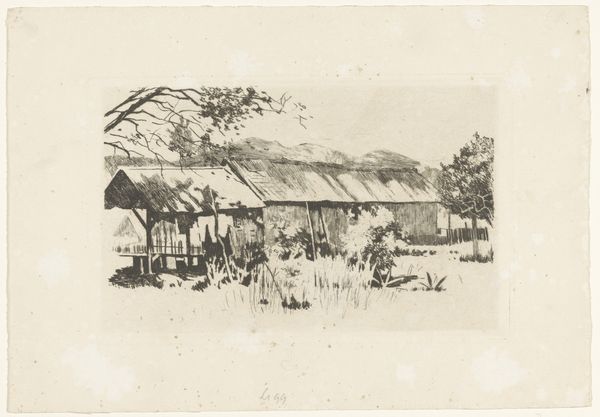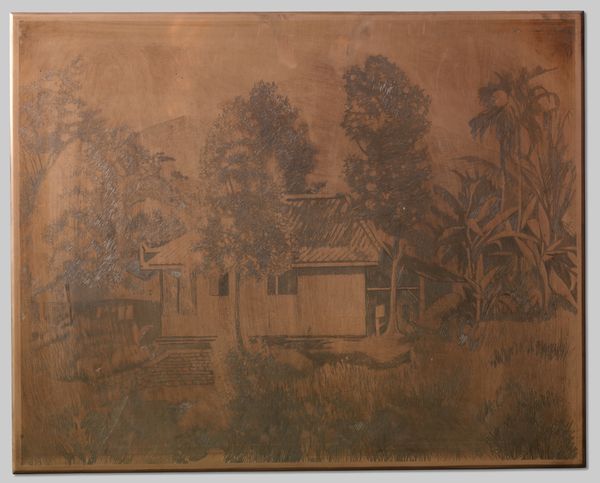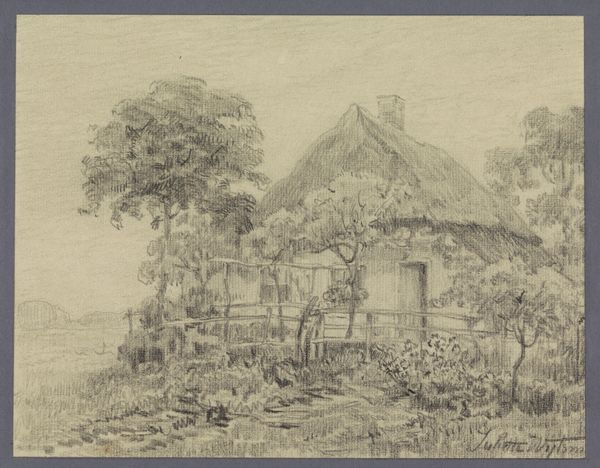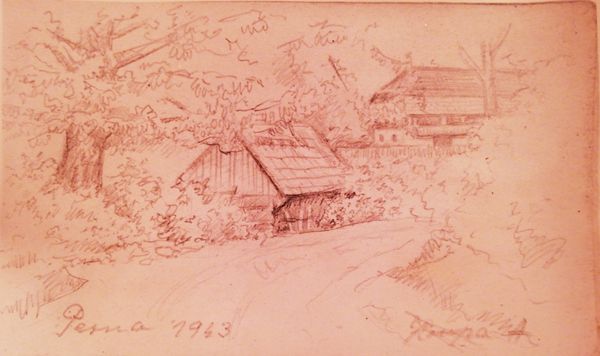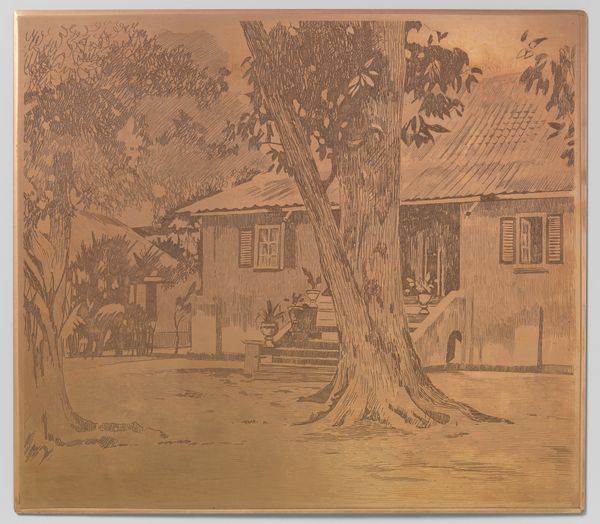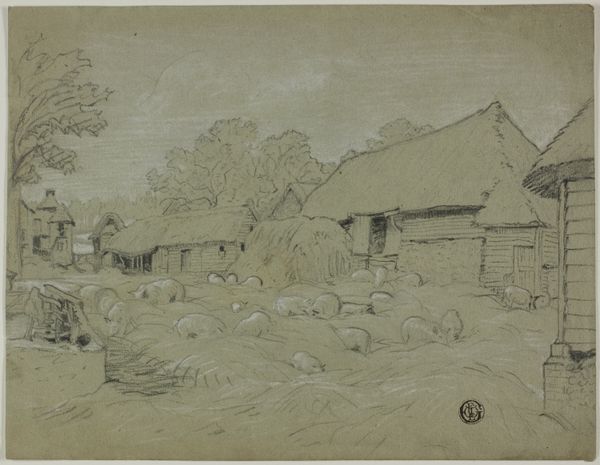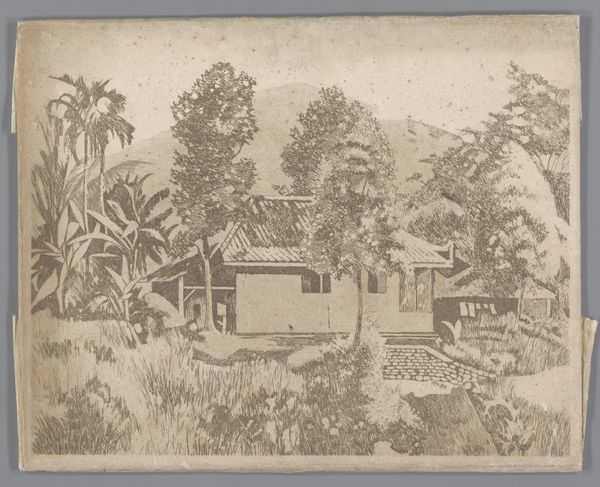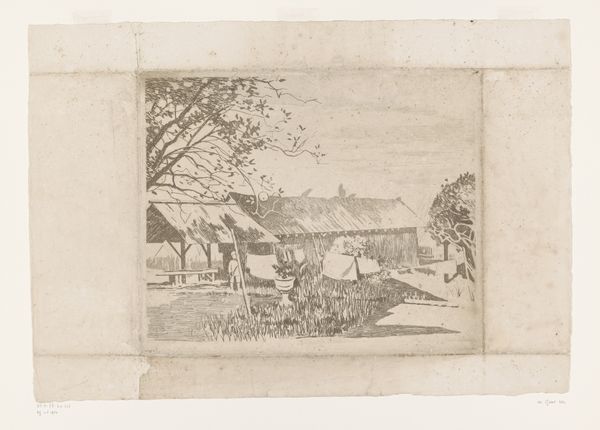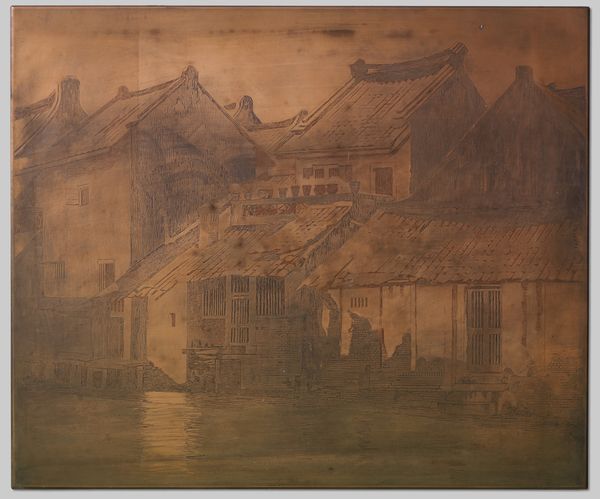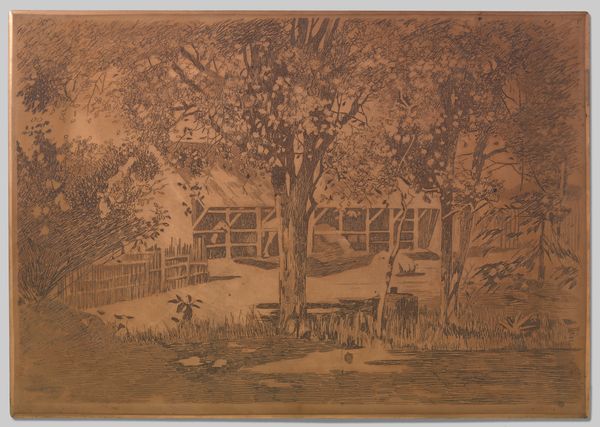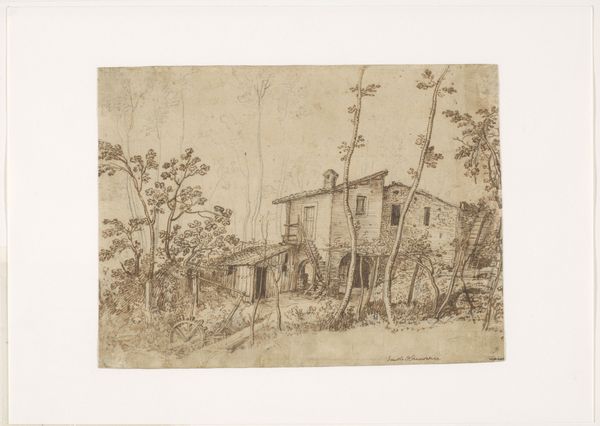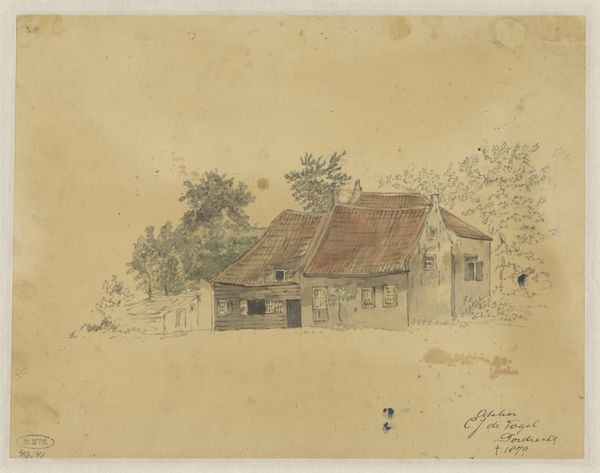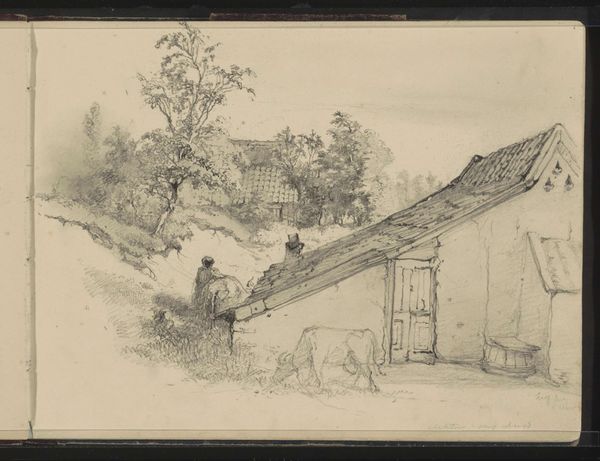
drawing, ink
#
drawing
#
toned paper
#
ink painting
#
landscape
#
ink
#
realism
Dimensions: height 150 mm, width 240 mm
Copyright: Rijks Museum: Open Domain
Curator: Willem Witsen created this ink drawing, titled "Lang bijgebouw, Gambar," around 1921. It resides here at the Rijksmuseum. Editor: It's such a delicate rendering. The toned paper gives it a nostalgic warmth. The long outbuilding appears almost dreamlike. Curator: Witsen's work often reflected the changing landscapes around him and the societal shifts of his time. The subtle detail hints at a traditional building gradually blending with the natural environment. The Gambar region was still relatively untouched then. This work might echo a societal move away from such landscapes. Editor: I’m drawn to the repetition of rectangular forms - the roofs of the two buildings, the posts holding up the outbuilding. It almost feels like the artist is searching for stability and structure within a scene of organic overgrowth. Perhaps the outbuilding functions as a potent symbol, a place for work, gathering, and contemplating the cycle of the seasons. Curator: Interesting observation, and it aligns with the changing role of agricultural labor back then. This visual vocabulary--buildings framed by the landscape--highlights a society's evolving relationship with its rural roots. Ink as a medium adds to the impression of decay and fragility. Editor: The eye is drawn to the subtle depiction of what could be interpreted as an observation point for the landscape in the smaller building. Is it simply practical? A dry spot from the rain? Or perhaps something deeper about looking onto or yearning to control the nature of landscape itself. Curator: I agree that this building adds further texture. Its construction does seem to hint at human manipulation, the ongoing project of claiming dominion. But it is an incomplete or decaying domination, don't you think? A constant process, an evolution and conversation rather than a full-stop. Editor: Indeed, it seems less a celebration of mastery and more a moment of wistful observation and a meditation on our temporal placement. Thank you, the viewing feels ever enriched by our shared consideration. Curator: Agreed, it’s important to remember that Witsen, like all artists, participates in shaping the ongoing narrative and visual iconography of our shifting socio-political sphere.
Comments
No comments
Be the first to comment and join the conversation on the ultimate creative platform.
